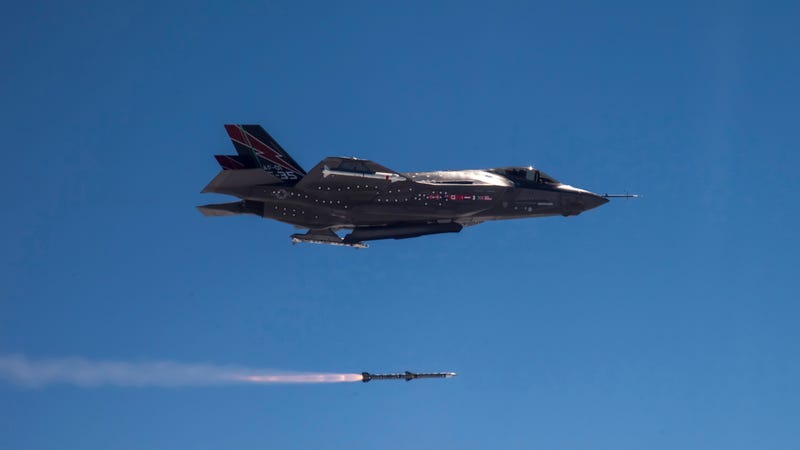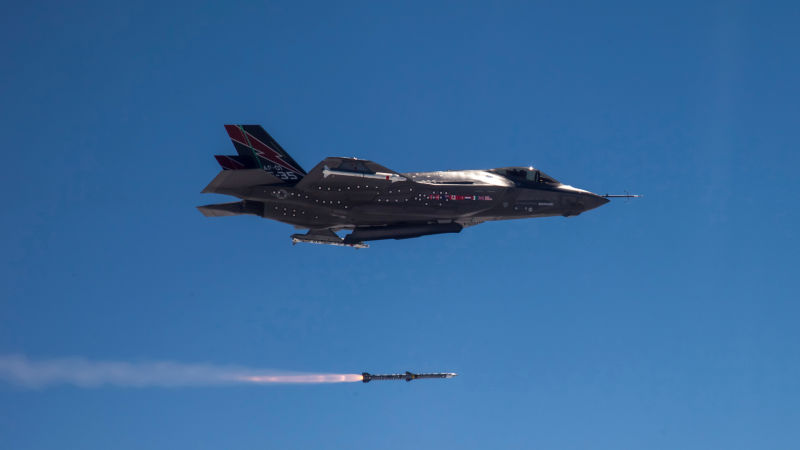
 Foxtrot AlphaTech and news from the world of modern defense.
Foxtrot AlphaTech and news from the world of modern defense.The American government has given Turkey the boot, officially removing the country from the F-35 Lightning II program. The two countries are at odds over Ankara’s purchase of an advanced Russian surface-to-air missile system, which Washington claimed could be used to spy on an aircraft that will be the backbone of U.S. airpower for the foreseeable future.
The move will cost the U.S. at least a half billion dollars as it struggles to replace Turkish companies that manufacture parts for the fighter jet.
From White House announcement:
Unfortunately, Turkey’s decision to purchase Russian S-400 air defense systems renders its continued involvement with the F-35 impossible. The F-35 cannot coexist with a Russian intelligence collection platform that will be used to learn about its advanced capabilities.
Advertisement
A U.S. ally since the Korean War, Turkey has long relied on American fighter jets to defend its airspace. Turkey was an early partner in the F-35 program, pledging early on to buy 100 of the conventional takeoff and landing variant of the aircraft, also known as the F-35A (the short-take-off-vertical-landing version is the F-35B, the navalized carrier variant is the F-35C).
Eight Turkish companies produce a total of 844 parts for jet, part of a global supply chain that was set to contribute $12 billion to the Turkish economy—more than the value of the jets themselves.
Well, almost. In December 2017, Turkish President Recep Tayyip Erdoğan signed a deal to purchase the S-400 “Triumf” long range surface to air missile system from Russia. The S-400 is Russia’s most advanced anti-aircraft system, capable of downing everything from low-flying aircraft and cruise missiles to high-flying ballistic missiles.
Advertisement
It was a curious arrangement for Turkey, a longstanding member of NATO. Not only was Erdogan purchasing weapons from NATO’s notional adversary, the S-400 missile system is incompatible with Link 16, the alliance’s secure digital communications standard. More importantly, it would also be incompatible with NATO “identify friend or foe” systems, allowing it to ignore friendly alliance aircraft that crossed into the S-400’s defensive bubble.

Advertisement
The agreement was so weird everyone assumed eventually it would just go away. Erdogan, a leader with strongman tendencies and a flair for the dramatic, would pull out of the deal and buy the U.S.-made Patriot missile. (Turkey expressed an interest in the Patriot as early as the 1990s but also demanded much of the underlying technology, something manufacturer Raytheon refused, both for commercial and national security reasons.) His point made—whatever it was—Erdogan would return to the American fold.
That didn’t happen. Over the past year, U.S. officials have made it extremely clear the S-400 purchase was incompatible with Turkey’s participation in the F-35 program. Not only was Washington concerned the Russian missile system’s hardware and software were incompatible, there was also the matter of the Russians. The S-400’s radar would likely operate in regular proximity to Turkish F-35s, giving Russian defense contractors working in Turkey insights into how to defeat the F-35’s radar-evading stealth technology. The Pentagon also worried that classified F-35 data could fall into Russian hands.
Advertisement
The U.S. government steadily upped the pressure, publicly warning Turkey it risked banishment and ordering Turkish F-35 pilots in Arizona to halt training and leave the country by the end of July.

Advertisement
Things came to a head this weekend, when the first Turkish S-400 missile systems arrived by air. After days of silence, on Wednesday, July 17th the White House announced Turkey was officially out of the F-35 program. Department of Defense officials later explained that the decision to expel Turkey would cost the U.S. $500 to $600 million in “nonrecurring engineering costs” as the government arranged to source parts made in Turkey elsewhere, according to Defense News.
Officials also told Defense News that although Turkey still legally owned the four Turkish Air Force F-35s in Arizona, Washington had the legal means to bar them from leaving the country.
Advertisement
Trump, who (no surprise) has an affinity for the authoritarian Turkish leader, predictably sought to blame the entire thing on Obama. In June, at a joint press conference with Erdogan at the G-20 conference in Osaka, Trump said:
PRESIDENT TRUMP: Well we’re discussing it. We have a complicated situation because the (Erdogan) was not allowed to buy the Patriot missiles. So when he bought the other ones — the S-200s or 400s — when he bought them he wanted to do this but he wasn’t allowed by the Obama administration to buy them until after he made a deal to buy other missiles.
So he buys the other missile and then all of a sudden they say “Well you can now buy our missile.” You don’t — you can’t do business that way. It’s not good. It’s not good.
Advertisement
None of this is actually true. As previously stated it was Raytheon that refused to sell to Turkey, not Obama. There was no “other missile”, at least of any consequence compared to a potential multi-billion dollar Patriot sale. Since the deal with Russia the U.S. has reiterated its offer to sell Patriots. Erdogan has refused.
How strange is all this? As of now, fifty U.S. thermonuclear bombs stored at a Turkish air base to counter Russia are defended by Russian made surface to air missiles.
Advertisement

Meanwhile Turkey is continuing development of its own fighter jet, TF-X. Unveiled as a mockup at the 2019 Paris Air Show, the jet will be Turkey’s first ever indigenously-designed fighter. That is almost certainly a gamble, as fifth generation fighters are notoriously hard to develop, but the country apparently thinks its defense industry is mature enough to handle the job. Turkey would do well to keep in mind that even the F-35 took nearly 20 years to develop, with the sheer staggering weight of the American defense-industrial complex behind it.
Advertisement
In a sublime act of trolling/hustling, Russia is now offering Turkey the Sukhoi Su-35 “Flanker-E” fighter to make up for the loss of the F-35:
Advertisement
The Su-35, a descendant of the Cold War era Su-27 Flanker, is a two engine, heavy multirole fighter that is currently the most advanced fighter in the Russian Aerospace Forces. The Flanker-E, as it’s also known, lacks stealth, but packs a powerful radar and large numbers of air-to-air missiles.
It is hard to understand why Turkey walked away from the F-35. Turkey lost the F-35, the economic benefits of the F-35 program, and the trust of other NATO member nations. The S-400 missile system is capable, yes, but in the end it’s just an air defense system, which is only useful if Turkey gets invaded from someone with an air force.
Advertisement
The F-35, on the other hand, is capable of both offensive and defensive action, which could be more useful to a country in a particularly restive part of the world.
It’s not clear what happens next in this shitshow. Erdogan could complain and demand the return of $400 million in jet fighters Turkey owns, or he could shrug his shoulders and move on. Relations with the United States—and the rest of NATO—have been seriously damaged. Erdogan may pull his country closer to the Russian orbit, or this could just be a sign he wants the country to pursue a course that doesn’t rely on the West.
Advertisement
Nobody is happy—except maybe Vladimir Putin.













